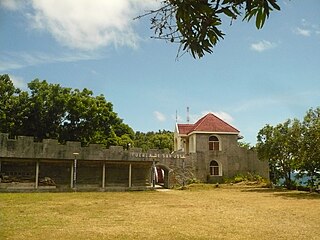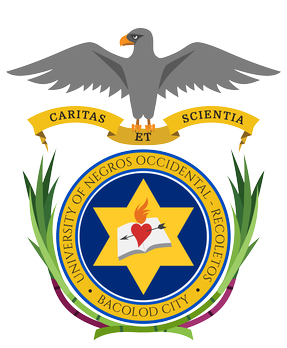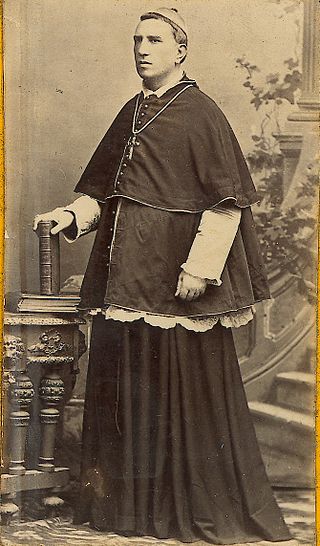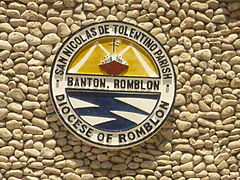
Romblon, officially the Province of Romblon, is an archipelagic province of the Philippines located in the Mimaropa region. Its main components include Romblon, Romblon, an archipelagic municipality of the same name that also serves as the provincial capital; Tablas, the largest island, covering nine municipalities ; Sibuyan with its three towns; as well as the smaller island municipalities of Corcuera, Banton, Concepcion, San Jose. The province lies south of Marinduque and Quezon, east of Oriental Mindoro, north of Aklan and Capiz, and west of Masbate. According to the 2020 census, it has a total population of 308,985.

Panay is the sixth-largest and fourth-most populous island in the Philippines, with a total land area of 12,011 km2 (4,637 sq mi) and a total population of 4,542,926, as of 2020 census. Panay comprises 4.4 percent of the entire population of the country. The City of Iloilo is its largest settlement with a total population of 457,626 inhabitants, as of 2020 census.

Banton, officially the Municipality of Banton, is a 5th class municipality in the province of Romblon, Philippines. According to the 2020 census, it has a population of 5,737 people.

Corcuera, officially the Municipality of Corcuera, is a 5th class municipality in the province of Romblon, Philippines. According to the 2020 census, it has a population of 10,112 people.

Romblon, officially the Municipality of Romblon, is a 3rd class municipality and capital of the province of Romblon, Philippines. According to the 2020 census, it has a population of 40,554 people. The archipelagic municipality is the capital of the province of Romblon and the seat of its provincial government. It includes Romblon Island as well as the nearby islands of Lugbon, Alad and Cobrador.

San Jose, officially the Municipality of San Jose, is a 5th class municipality in the province of Romblon, Philippines. According to the 2020 census, it has a population of 11,759 people.

Banate, officially the Municipality of Banate, is a 4th class municipality in the province of Iloilo, Philippines. According to the 2020 census, it has a population of 33,376 people.

The Colegio de Santo Tomas – Recoletos is the first formal Recollect school in the Philippines. It is located in San Carlos, Negros Occidental, and used to be known as the Sto. Tomas de Villanueva Institute. Colegio de Sto. Tomas - Recoletos. A private college, it also provides Secondary education for young men and women. As of August 2022, the institution now provides tertiary education, offering courses in Criminology and Entrepreneurship.

The University of San Jose–Recoletos, also referred to by its acronym USJ–R or to its colloquially shortened name San Jose, is a private Catholic research and coeducational basic and higher education institution run by the Order of Augustinian Recollects in Cebu City, Cebu, Philippines. It was founded by the Augustinian Recollects in 1947. From classes held in an old building and a portion of a convent, the school built modern structures while retaining classic features.

The Order of Augustinian Recollects (OAR) is a mendicant Catholic religious order of friars and nuns. It is a reformist offshoot from the Augustinian hermit friars and follows the same Rule of St. Augustine. They have also been known as the "Discalced Augustinians".

The University of Negros Occidental – Recoletos, is a private, Catholic coeducational basic and higher education institution administered by the Order of Augustinian Recollects in Bacolod, Negros Occidental, Philippines. It was founded in 1941.

San Nicolas de Tolentino Parish Church is a Roman Catholic parish church in Quezon City, Philippines. It belongs to the Diocese of Cubao, under the Vicariate of Sto. Nino. The church is under the care of the Augustinian Recollect Province of Saint Ezequiél Moreno.

Ezequiél Moreno y Díaz, OAR was a Spanish Catholic prelate who served as Bishop of Pasto from 1895 to 1906. He was a member of the Order of Augustinian Recollects and previously served as a missionary to the Philippines and as Vicar Apostolic of Casanare in Colombia.

The Augustinian Recollect Province of Saint Ezequiél Moreno is a division of the Order of Augustinian Recollects that has jurisdiction over the Philippines, Taiwan and Sierra Leone. It officially separated from the Province of Saint Nicholas de Tolentine on 28 November 1998. Today, the Provincialate House is located at the San Nicolas De Tolentino Parish Church on Neptune Street, Congressional Subdivision, Project 6, Quezon City.

Andrés Ferrero y Malo de San José, O.A.R., was an Augustinian Recollect, who became the third Bishop of Jaro, from 24 March 1898 to 27 October 1903. He was born in Arnedo, La Rioja, Spain, on 30 November 1846.

Leandro Arrúe Agudo, O.A.R. was a Spanish Catholic prelate who served as Bishop of Jaro from 1885 until his death. He was born in Calatayud, Zaragoza, Spain, on 13 January 1837 and took vows as an Augustinian Recollect in 1856.

The Twin Forts of Romblon are a pair of Spanish fortifications located in the town of Romblon, Romblon in the Philippines. It was built by the Spanish in 1644 to protect the town from Muslim raids and Dutch piracy in the country during the Eighty Years' War. In 2013, the site has been declared a National Cultural Treasure under the protection of the Philippine government through the National Museum of the Philippines.

Saint Joseph Cathedral Parish, commonly known as the Romblon Cathedral, is a Roman Catholic cathedral in Romblon town, in the province of Romblon, Philippines. One of the province's known landmarks, it is the seat of the Diocese of Romblon and was declared a National Cultural Treasure in 2001 by the National Museum of the Philippines.

San Nicolas de Tolentino Cathedral, commonly known as the Surigao Cathedral, is a Roman Catholic cathedral located at Surigao City in the Philippines. It is the seat of the Diocese of Surigao.

Fuerza de San José is a 17th-century Spanish fortification located in the municipality of Banton, on the homonymous island, in Romblon, Philippines. Together with Fuerza de San Andrés and Fuerza de Santiago, it is part of the ancient fortification system of the Sibuyan Sea islands, built under the command of Agustín de San Pedro in order to defend the locals from the attacks that devastated the coasts of the archipelago, especially Moorish incursions from the southern islands. Considered by locals a symbol of greatness and resistance, it played a fundamental role in the defense of Banton in the first decades of Spanish rule of the region, and witnessed numerous battles.
































